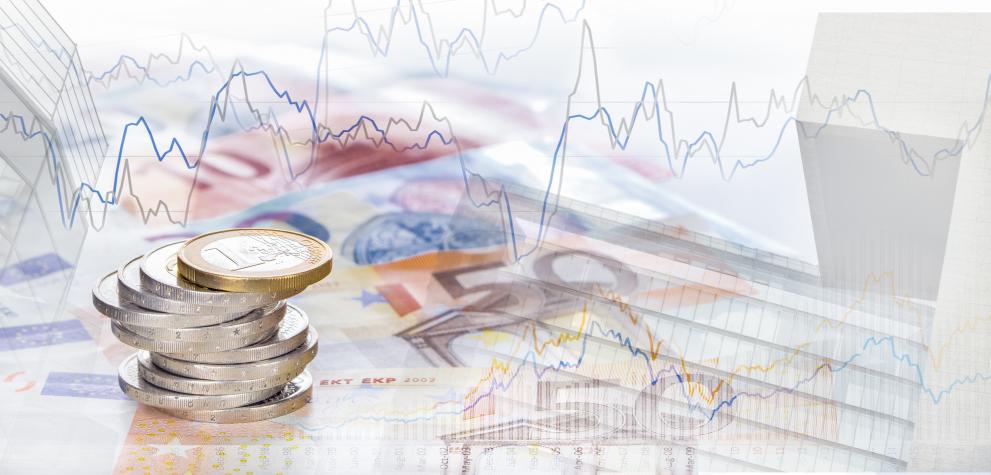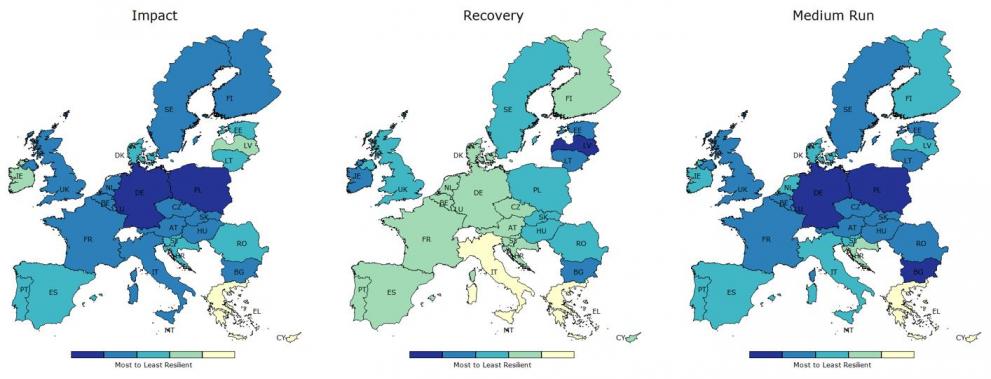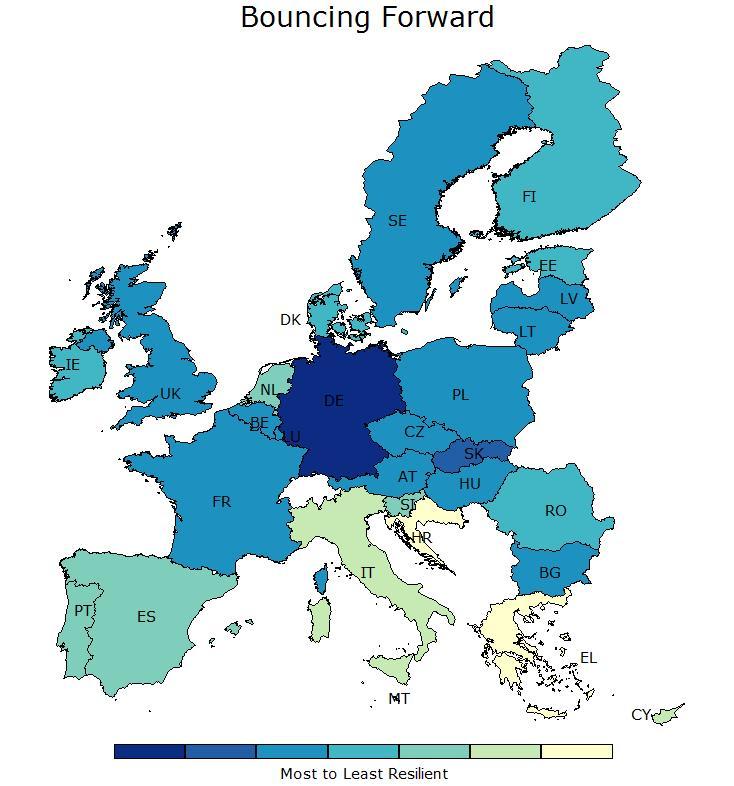
The financial and economic crisis that started in 2007 was felt across the EU but its impact was uneven.
A new JRC report looks at what made some countries more resilient than others, and concludes that mere 'shock absorption' may not be the only possible or best strategy looking forward.
Instead, adaptation and transformation has helped some countries use the crisis as an opportunity.
The JRC study measures the degree of economic and societal resilience of each Member State during and after the crisis, and identifies particular country characteristics linked to resilience.
It also looks at which EU countries were able to use the crisis as an opportunity to "bounce forward" and emerge stronger.
The analysis is based on the JRC conceptual framework for resilience, which places at its core the wellbeing of individuals, thus going beyond the merely economic growth perspective.
Ranking country resilience is not trivial
Ranking countries according to their resilience is a challenge for several reasons.
For example, resilience may not be homogeneous across the different stages of the crisis, with countries that are more resilient in the short run (vulnerability and absorption) not necessarily performing better in the recovery (adaptation) or the medium run (adaptation).
A case in point is Bulgaria and the Baltics which score better in the medium than in the short run, while Germany and Poland are among the most resilient countries both in the short and medium run.

Going beyond economy
The assessment of country resilience changes considerably when broadening the perspective from a purely economic to a socio-economic viewpoint.
For example, Bulgaria proves more resilient when social variables such as exclusion, happiness, health and wages are included in the analysis, while Hungary becomes less resilient when the social dimension is factored in.
The importance of this broader perspective further reinforces the case for the European Pillar of Social Rights, and for strengthening the social dimension in the work of the European Semester.
True resilience means bouncing forward, not back

The goal of resilience is not necessarily to bounce back to the pre-crisis stage, but to bounce forward and potentially transform, in other words to improve the situation compared to the pre-crisis period.
Country performance in this respect is markedly varied: while Germany, Malta and Slovakia managed to bounce forward in many areas, countries like Greece, Italy and Spain still lag behind their pre-crisis performance across most socio-economic dimensions.
In most countries, active labour market measures, productivity and R&D expenditures have increased compared to their pre-crisis level.
Countries have been generally able to 'bounce forward' more as far as monetary aspects of wellbeing (GDP, consumption and income) are concerned, compared to non-monetary aspects of wellbeing (e.g. happiness, inequality, social exclusion and the share of young people not in employment, education or training).
This latter finding again confirms the need to consider the social dimension in crisis response and economic management.
Resilience – a puzzle of 200 pieces
The analysis tested over 200 candidate characteristics, mostly from the World Economic Forum’s Competitiveness Index database, for their association with resilience, ranging from indicators of life quality to macroeconomic policies to digital development.
Different country characteristics can make a difference in the levels of resilience to the crisis.
In particular, high values of pre-crisis government expenditures on social protection turn out to be the most important feature in predicting the country’s absorptive capacity (short run).
When focusing on the medium run, the countries with more stable political environment are performing better. Business environment is critical to successfully overcome a crisis and "bounce forward".
Raising recognition of the importance of resilience
In recent years, resilience has gained importance in policy discussions and has often become a policy target.
This is due to the recognition that EU countries are confronted with socio-economic shocks and rapid structural changes, political instability and security threats at the same time, which tests their capacities to react and transform.
Public institutions, including those of the European Union, need to adapt to these new circumstances, and assume their role not only in engineering system-wide transformations to mitigate damages, but also to empower citizens to rise to future challenges.
An emerging conceptual framework to measure resilience
While resilience was becoming more and more discussed, an agreed definition and a framework for its conceptualisation and measurement were lacking.
Starting in 2015, the JRC has developed a conceptual framework to facilitate a common understanding and incorporate resilience into policy thinking.
It broadens the perspective from a purely economic to a socio-economic viewpoint and puts societal wellbeing at the core business.
Future work
The JRC is continuing work on resilience considering different shocks or slow burning process, e.g. artificial intelligence and migration, but also developing research to measure resilience at different aggregation levels, e.g. focussing not on countries but on regions and down to individuals.
The extension of the analysis to many shocks feeds the dashboard to monitor resilience in the Union.
Related Content
JRC report: Building a Scientific Narrative Towards a More Resilient EU Society Part 1: Conceptual Framework
Details
- Publication date
- 28 September 2018
